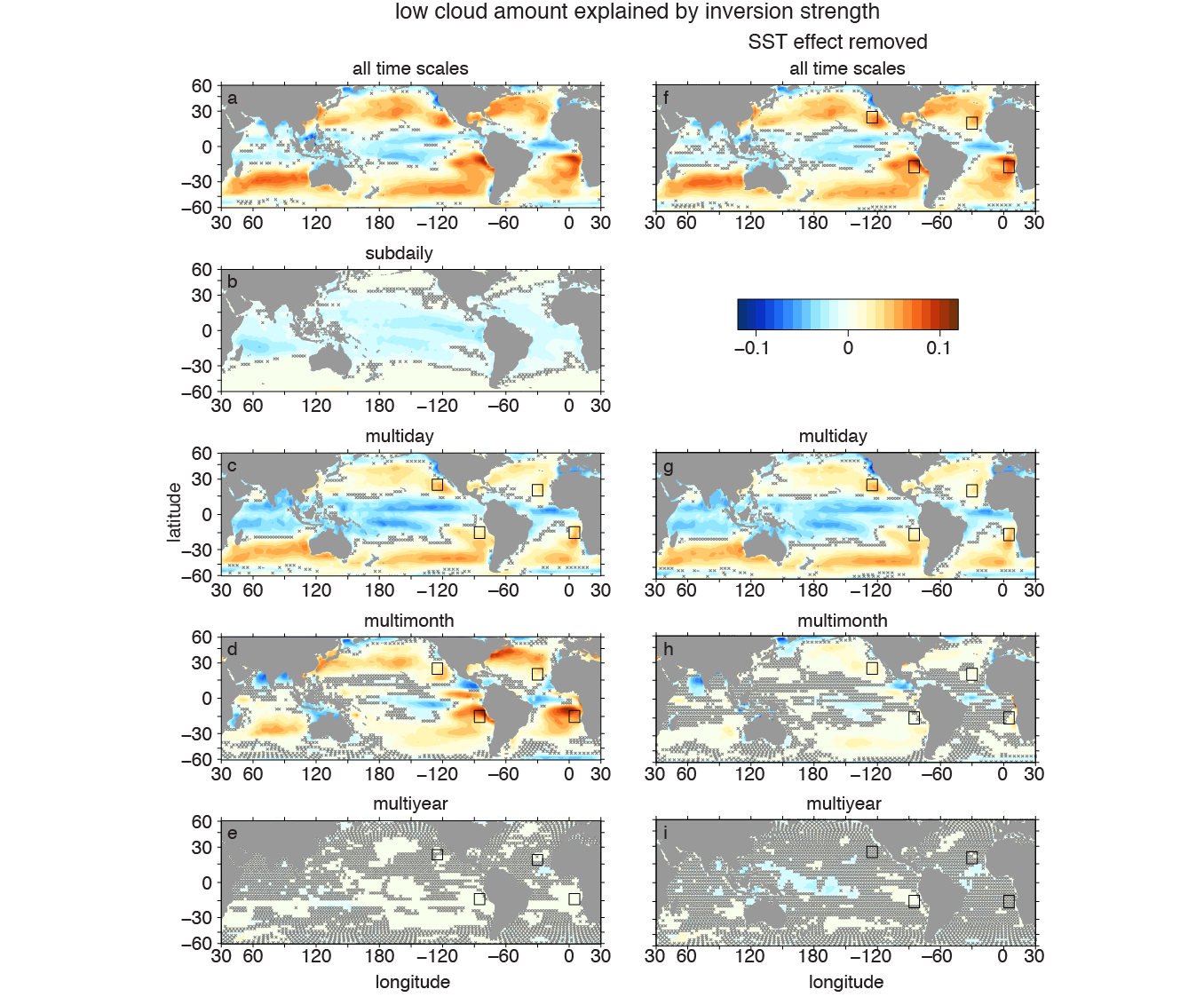The time scales of variability of marine low clouds
Submitter:
de Szoeke, Simon Paul — Oregon State University
Area of research:
Cloud Distributions/Characterizations
Journal Reference:
Science
Day-to-day weather variations have a dominant influence on marine boundary layer inversion strength and low clouds, compared to other time scales.
This study empirically estimates the association of low cloud amount to inversion strength, sea surface temperature (SST), and vertical velocity on subdaily (diurnal), multiday (mostly synoptic), multimonth (mostly seasonal), and multiyear time scales using 26.5 years of 4x daily global International Satellite Cloud Climatology Project (ISCCP) and reanalysis data.
Impact
The sensitivity of low clouds to inversion strength varies depending on the time scale and region, precluding using a single sensitivity from one region and timescale for estimating important cloud feedbacks to climate change.
The sensitivity of eastern Pacific and Atlantic low clouds to inversion strength at daily time scales is less than the often-used seasonal relationship of 6% low clouds amount per kelvin lower tropospheric stability, but inversion strength explains more daily than monthly low-cloud variability when the effect of SST is removed.
Summary
Low cloud amount in the eastern Pacific and Atlantic stratocumulus decks increases due to inversion strength. Low clouds are most sensitive to multimonth inversion strength, but multiday inversion strength variability is stronger. Most multimonth variability is associated with the seasonal cycle of SST. The multimonth and multiyear inversion strength regressions each explain cloud amount variability of 0.05-0.1, but most of this is correlated to SST. The cloud amount explained is everywhere 0.03 or less once the effect of SST is removed.
Multiday midlatitude weather generates cloud and inversion strength features that copropagate Equatorward, influencing stratocumulus cloud amount in the tropical eastern-ocean regions.



